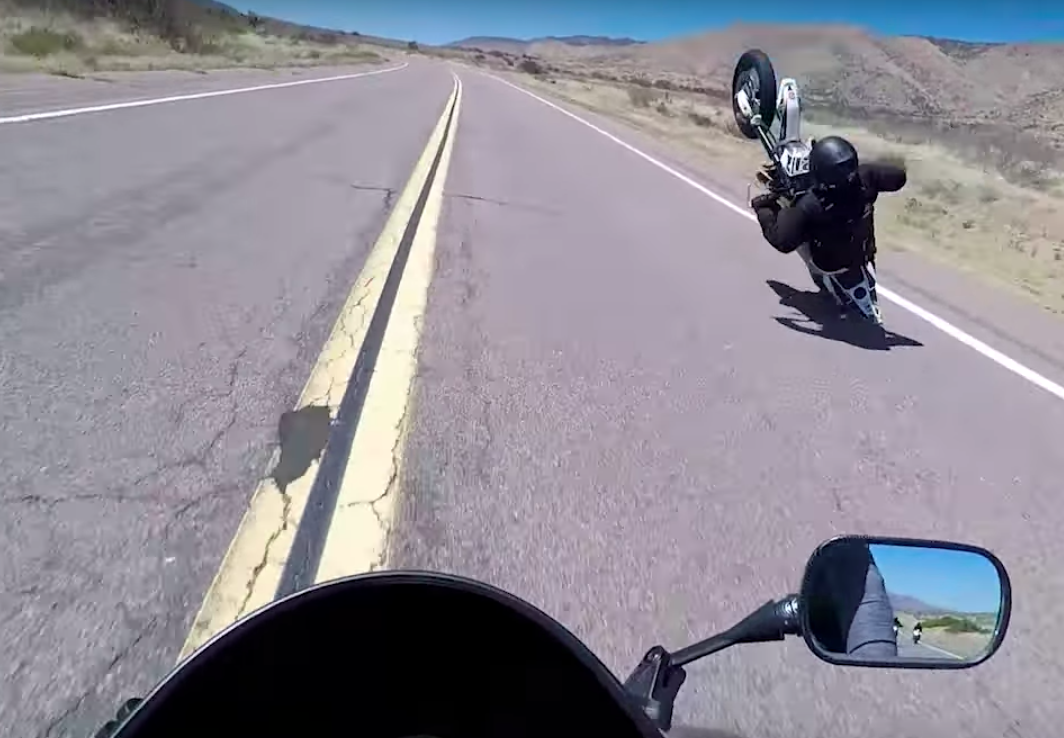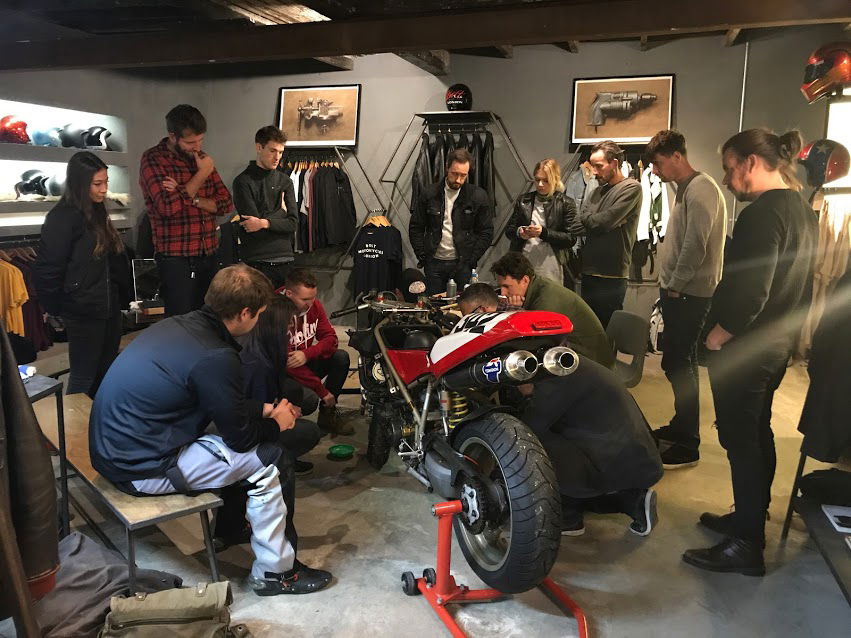Exploding myths: Airbag race suit technology
Bags For Life...

MOTORCYCLING is a risky game, there’s no denying it. Everyone eventually crashes, and with performance increasing year on year, so, arguably, does the risk of doing yourself some serious damage.
But in 2018 motorcycling is the safest it has ever been. Thanks to innovative technology, we’re wearing equipment that the likes of Barry Sheene could only dream of. Helmets weigh little more than one kilogram yet can withstand huge impacts. Leathers save riders’ skin after 100mph lowsides and impact protection can turn a bone-breaking jolt into nothing but bruises.
Among this armoury of, er, armour is a relative newcomer to the game, and one that’s not yet been widely adopted. While tethered airbag systems (ones that attach to your bike via a cord, and activate when it’s pulled hard) have been around for years, motorcycle airbag systems are only now making it to the mainstream. The ‘modern’ airbag suit as we know it was first seen as a concept in the early 2000s, entered racing in the mid-noughties and has only been available to Joe Public only since 2011.
And, as ever, top-end racing is helping to develop the technology and bring it down to the masses. As of the first GP at Qatar this year, it’s been obligatory for riders in all three world championship classes – MotoGP, Moto2 and Moto3 – to wear an airbag system which covers the shoulders and collarbone, with full or central back protection optional. After seeing the injury reduction rate, other race series are likely to follow suit.
For the purposes of this article, we’re going to focus on just the two main contenders. There are other manufacturers offering and developing such systems, but Dainese and Alpinestars are the two forerunners on both road and track. Each uses patented technology and algorithms that have already proven incredibly successful in reducing serious injuries of the upper body.
Dainese came first, introducing its airbag prototype vest in 2000. Fast-forward seven years and the D-Air racing suit made its debut MotoGP inflation after Michael Ranseder crashed at the Valencia MotoGP. Then, in 2009, it became an internal system, although that same year Jorge Lorenzo suffered an awkward moment at Brno. His airbag inflated following a 75mph fall during the race, but failed to deflate afterwards, leaving him looking like a recently-burst sausage.
But any teething issues were soon resolved, and, to date, Dainese has recorded more than 600 positive activations in all three GP classes.
The other Italian giant, Alpinestars, began research into motorcycle airbags in 2001, and following several years of R&D, debuted its system in MotoGP in 2009.
Nowadays Dainese and Alpinestars dominate the market with their respective offerings, D-Air and Tech-Air, both of which come in track and street guises. How they work is little short of genius. Microscopic accelerometers and gyroscopes on the suits measure acceleration and lean angle, which is fed back to the internal computerised ‘brain’ of the system, around 1,000 times per second. Dainese uses a GPS unit to help the ECU work out how fast the bike is moving, while Alpinestars uses an advanced inertial algorithm instead. The ECU uses this data to detect a crash, determine its violence and decide whether to activate the airbag, all in a matter of milliseconds.
Upon detecting an accident, Alpinestars Tech-Air Race system’s ECU sets off one of a pair of helium-argon charge canisters that fill the vest in 45 milliseconds. Two gas bottles mean that a rider has a back-up in case they can get back on to the bike and continue racing after a crash.
The D-Air system meanwhile uses patented ‘microfilaments’ (millions of tiny filaments that connect to both sides of the interior of the airbags), which allow for constant and even distribution upon rapid inflation, again taking just 45 milliseconds.
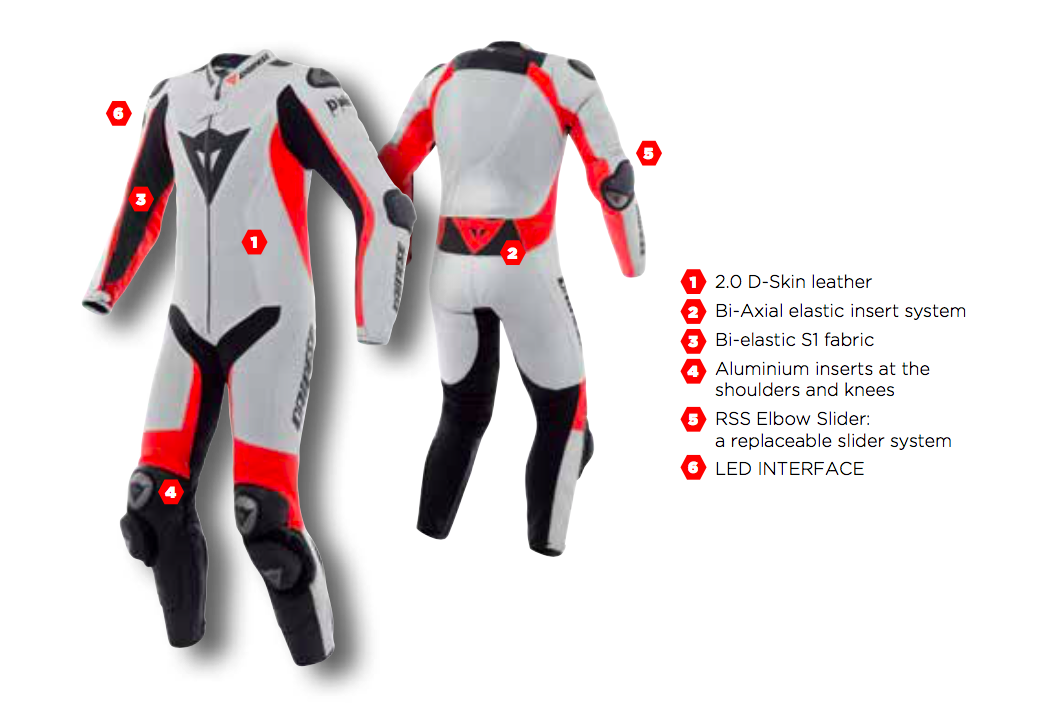
Dainese’s D-Air system is integrated into its Mugello R D-Air (£3,399.95) and Misano D-Air (£1,899.95) race leathers, which weigh 1.2kg more than the manufacturer’s standard race suit, while Alpinestars’ 2kg Tech-Air Race Vest is a separate £999 garment, which is compatible with three race suits costing from £849.99 to £1599.99. While Dainese offers airbag protection to the neck, shoulders, collarbone and kidneys, Alpinestars adds inflation to the chest and upper abdomen.
For the 2018 MotoGP season, Dainese has five riders across the series – Franco Morbidelli, Andrea Iannone, Jack Miller, Pol Espargaro and Valentino Rossi – in its own airbag suit, and provides nine more riders with airbag suits to wear under their sponsor leathers.
Alpinestars has the monopoly, however, with almost 50 riders on the grid in its Tech-Air Race vest (26 with Alpinestars and 22 with other leather manufacturer), and it too has seen more than 600 activations in MotoGP, with no false deployments.
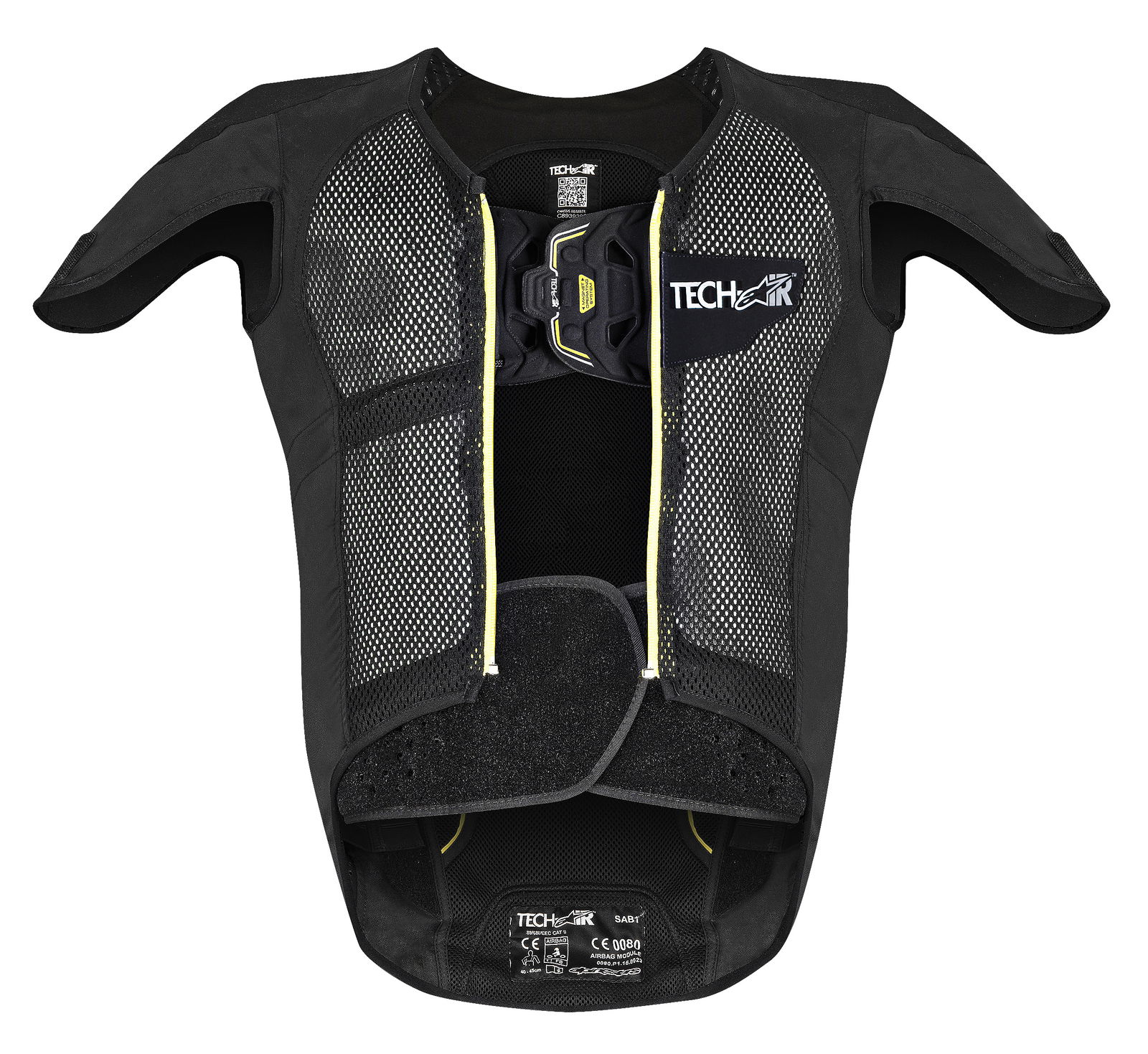
Out of these combined thousands of crashes, there’s been a few that have made the headlines. Take Leon Haslam’s violent 150mph highside on his WSBK BMW S1000RR at Misano practice in 2011. Despite landing heavily on his shoulders and back, he walked away uninjured thanks to the D-Air system.
And in February 2016, during the opening MotoGP season test at Sepang in Malaysia Loris Baz suffered a tyre failure on his motorcycle. The resulting spill launched the Frenchman from his bike at 180+mph and he crashed to the deck, with an impact of 29.9Gs recorded on his left shoulder. But the Alpinestars Tech-Air Race airbag system meant that Baz suffered just a bruised elbow.
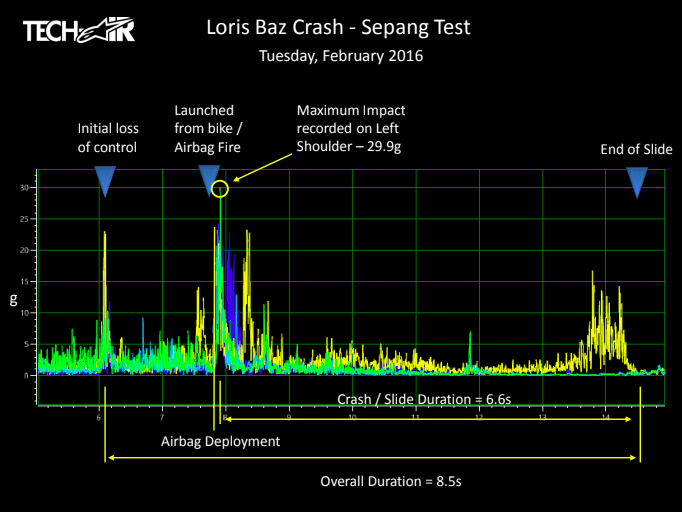
However, feelings towards the tech becoming compulsory are mixed. As reported on our sister site, Crash.net earlier this year, Dainese wearer Valentino Rossi doesn’t like to ride without D-Air.
"For me is a great step for the safety, especially for the shoulders, for the collarbones," he said. "I think around 2009, Dainese start to bring [the airbag] after a long study but I don't feel comfortable at the beginning because I lose some movement and the weight. Because was too big.
"But from that moment they are able to improve a lot and now sincerely I don’t want to go on the track without the D-Air, because for sure for a type of crash it can help very much.
Alpinestar’s Jorge Lorenzo, however, previously chose not to wear the vest at all times, because he found it uncomfortable.
"I want to help Alpinestars make a good evolution, because I think it's important for the safety of the rider," he said at Valencia.
"We need to improve the comfort a little bit, because when you have the airbag, you feel more stiff in the shoulders, and this is something we need to work on, together with making it a bit more safe.
"But it's very interesting and very good for the safety of the riders. So I'm in favour of it."
The main difference between road and race suits comes in terms of coverage and the factors required to induce activation. Race systems look for a loss of control and rapid acceleration off the bike. They don’t deploy under 50km/h (31mph) or if a lowside isn’t deemed violent enough to cause injuries. This lets the rider get back on the bike and continue racing if possible.
Road systems however anticipate the rider being hit by a car while stationary (in the event of a rear end at traffic lights) or colliding with either a car or other object while moving. Again, it won’t activate if not necessary, or at speeds of under 10kph (6mph).
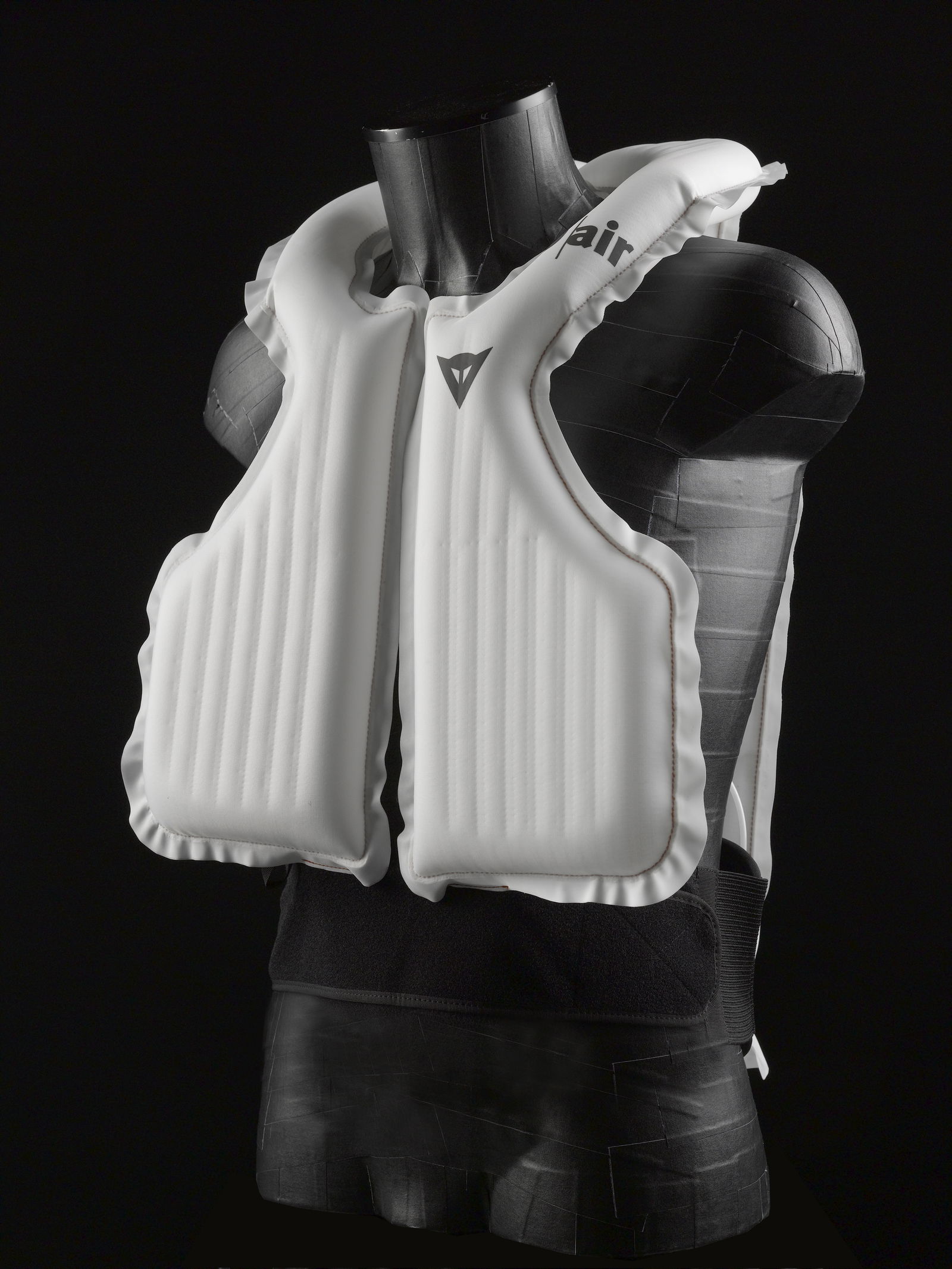
Both Dainese and Alpinestars’ road airbag systems system offer comprehensive upper body protection including back, shoulders, kidney area and chest – all of the most exposed areas during a street crash. These suits are not as restricted in terms of weight and size as race suits, and so the possibility of further coverage is always there.
Dainese’s D-Air Street system was launched in 2011, and currently offers three D-Air road jackets, for sport (Misano - £1,499.95), touring (Cyclone - £1,699.95) and urban (Continental - £1,499.95) purposes. Alpinestars system debuted in November 2014 and has eight compatible jackets, which need to be purchased separately to the vest and cost from £329.99 to £899.99. The Tech-Air Race vest can be reprogrammed to offer the same protection as the Street vest (both cost £999).
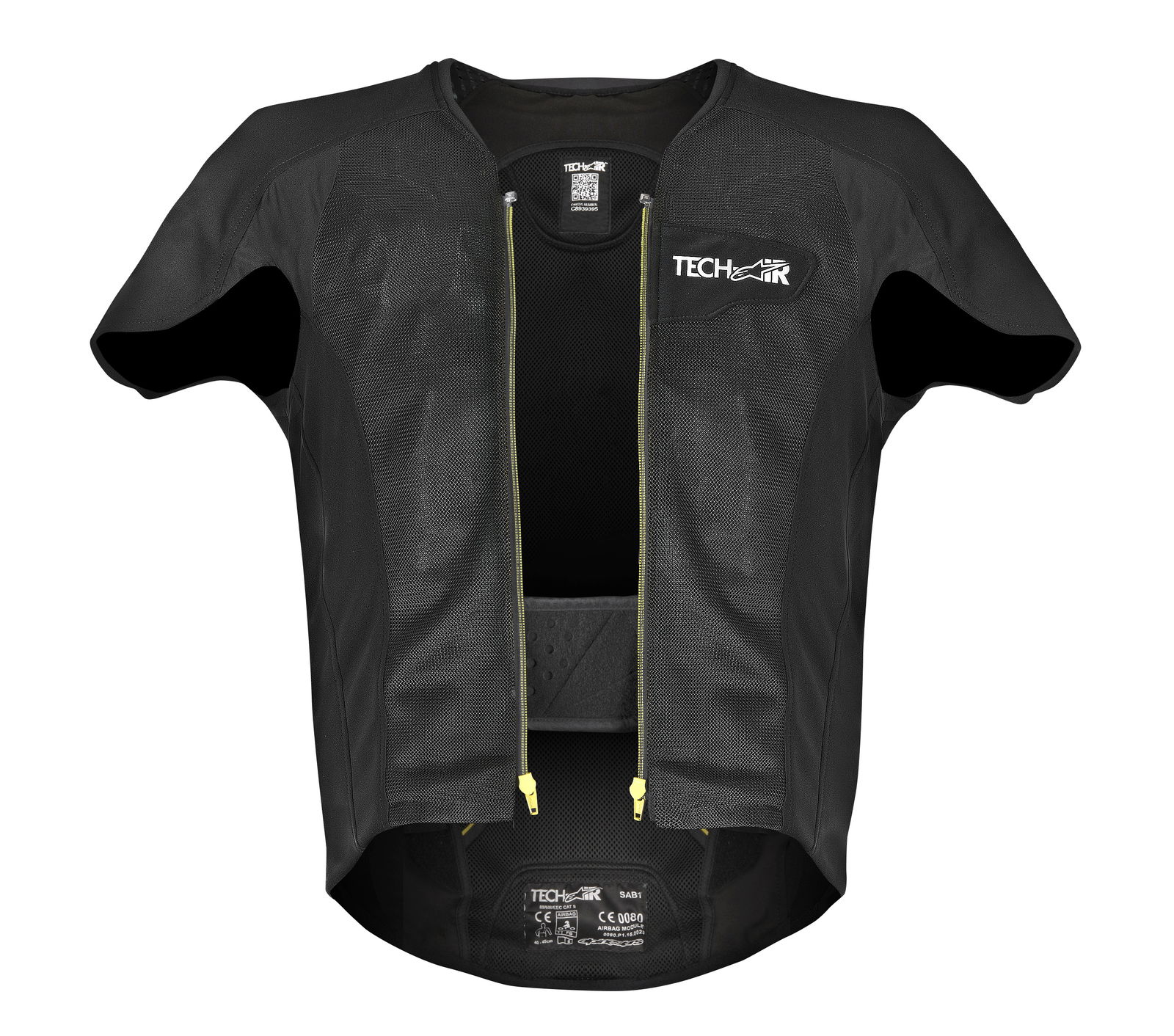
Both systems require returning to the factory to be recharged following a crash, which costs Tech-Air owners £269.99 and D-Air owners either £190 or £260, depending on the model.
The benefits of airbag suits are massive, both on road and on track. While it’s difficult for manufacturers to perform controlled tests on their efficiency, the firms believe their systems are significantly reducing injury and death among riders.
Dainese’s Racing Director, Marco Pastore, is just one of them. He commented: “We believe D-Air is very important because since our riders have used it we have seen a large decrease – almost totally – of collarbone fractures. Beforehand it was a common injury and now it happens just sometimes in very special kind of crashes. With our airbag in the last 10 years we’ve had just one or two collarbone injuries. It has also decreased injuries to the shoulders and elsewhere on the upper body.”
An Alpinestars spokesman added: “We cannot provide precise numbers, but it’s true that the airbag generated an important reduction of injuries.”
Not only do they seriously reduce rider injury but on a more psychological level, the reassurance of the airbag ‘safety net’ gives riders the confidence to push themselves harder than they ever have before.
Pastore added: “The airbag system is very appreciated by the riders. When asked why the airbag is important to their racing they say it helps them to feel more confident and safer when they ride.
“And to have more confidence of your own potential, means that you can push further to reach the limit. Sometimes if you don’t feel 100 per cent protected you don’t give 100 per cent performance.”
On the road, however, this isn’t necessarily a good thing, with the false sense of security potentially causing riders to attempt to push beyond their limits. However, the systems are not popular enough on the road yet for this to be an issue to address. Neither manufacturer could provide a total number of units sold, but estimated it to be in the ‘thousands worldwide’.
Airbag systems are arguably the biggest revolution in rider safety since helmets. They have provided new levels of protection to both professional racers and the public and are reducing injury and raising racing performance. What’s not to like – apart from the price?
